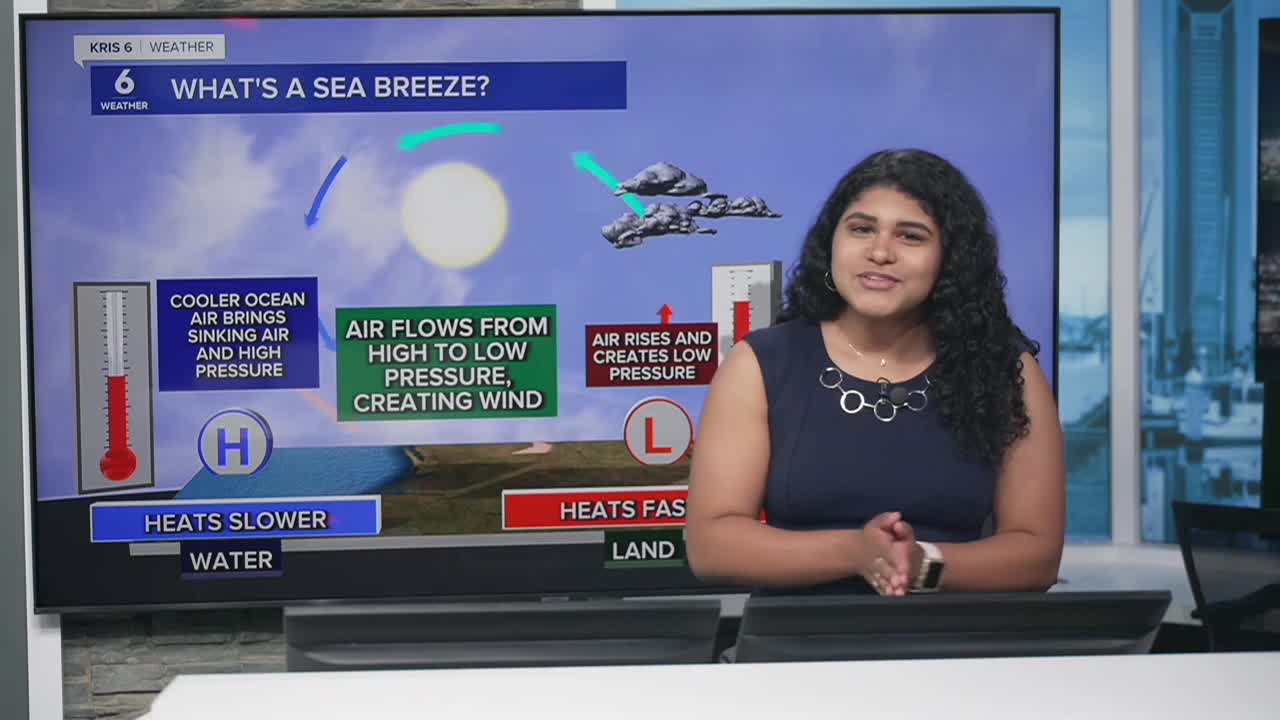CORPUS CHRISTI, TX — With warm Gulf waters here along the Texas Coast, this week’s Science Snippet will cover how sea breezes form and how they impact weather here in the Coastal Bend.
Temperature contrast is the key
Throughout the warmer months, you can expect a sea breeze here in south Texas. Sea breezes are based on the difference in heating between land and water. Land heats up faster than the Gulf and the temperature contrast is strong, leading to strong sea breezes. The summer heat warms up the beaches and inland areas quickly since we are so close to the Gulf. Flat land near the coast allows for winds to flow easily.
Sea breeze vs Land breeze
Sea breeze happens in the daytime where land heats faster than water and warm air rises over land. Then, cooler Gulf air rushes in to replace it.
Land breeze happens at night where land cools faster than water and warm air rises over the Gulf. Then, cooler air from land flows out to sea.
Sea Breeze Showers
- Sea breeze starts moving inland
- As the day heats up, the sea breeze pushes warm, humid Gulf air over the land.
- Air converges inland
- The onshore breeze runs into the slower-moving inland air. That “traffic jam” of air has nowhere to go but up.
- Rising air cools and condenses
- The warm, humid air rises, cools, and forms puffy cumulus clouds.
- Clouds grow into showers or storms
- If there’s enough moisture and instability, those clouds grow tall enough to produce brief showers or thunderstorms — usually in the mid to late afternoon.
The sea breeze cycle: Onshore vs Offshore flow
In the afternoon, we get an onshore flow, which consists of cooler, saltier air with more humidity. Wind blows from the water toward the land.
As land heats up faster than the Gulf during the day, warm air rises over land, creating a low-pressure area. The cooler, denser air over the Gulf moves inland to replace it.
Offshore flow happens in the nighttime. Wind blows from the land toward the water. After sunset, land cools faster than the Gulf and warmer air rises over the Gulf, creating lower pressure over water. The cooler, denser air over land flows out toward the Gulf to replace it.
Why it happens in Corpus Christi and South Texas
The Gulf supplies an almost endless source of warm, moist air. The flat terrain inland allows the sea breeze front to move far from the shore before fading. In the summer, the heat and humidity make the air unstable enough for quick rain development. Often, the showers pop up well inland of downtown Corpus Christi — sometimes in places like Alice or Beeville — because that’s where the sea breeze front meets hotter inland air. These sea breeze showers are short-lived and often last less than an hour.



